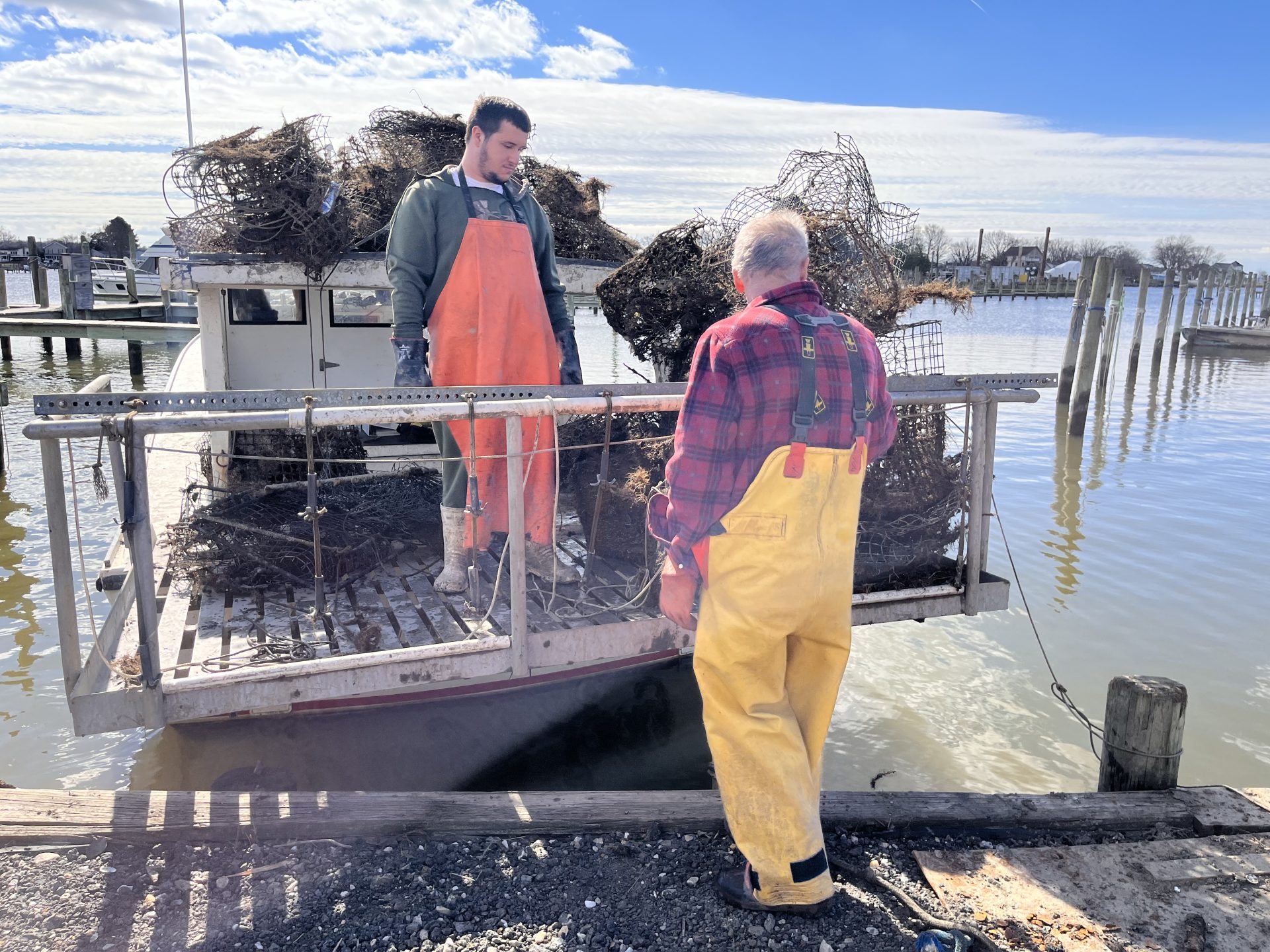
Oyster Recovery Partnership Selected to Participate in National Cleanup of Discarded Fishing Gear
Dec. 10, 2024—The Oyster Recovery Partnership (ORP) has been selected to participate in a massive cleanup of derelict fishing gear in U.S. coastal waters as part of the National Fishing Trap Removal, Assessment and Prevention (TRAP) Program. The program is administered by William & Mary’s Batten School & VIMS with funds stemming from an initial $8 million, four-year grant awarded by the National Oceanic & Atmospheric Administration (NOAA) Marine Debris Program (MDP) through the Bipartisan Infrastructure Law.
ORP was one of eleven groups who received a total of $1.4 million to lead local gear removal projects in the TRAP Program’s first year of distributing subawards. A grant of $134,226 was awarded to ORP to remove derelict blue crab traps from Anne Arundel County waters in the Chesapeake Bay. This project builds on decades of successful derelict crab trap removal efforts by leveraging data from the Maryland’s Geological Survey’s long-term state mapping initiative to identify traps for removal and hiring watermen to retrieve and dispose of the gear.

Watermen pulling a hooked derelict crab pot onboard their vessel during ORP’s 2022 cleanup efforts in Baltimore County, Maryland.
“We are honored to be selected as part of the TRAP Program and excited to contribute to this critical national effort to address derelict fishing gear,” said Ward Slacum, Executive Director of the Oyster Recovery Partnership. “This funding will enable us to build on our long-standing work in the Chesapeake Bay, removing debris that impacts marine life and local fisheries. By collaborating with watermen and leveraging ongoing Baywide mapping efforts, we are creating tangible benefits for our ecosystem, seafood industry, and community.”
Coastal waters in the U.S. and around the world are littered with fishing equipment that has been lost, abandoned or otherwise discarded. It can harm ecosystems and economies by trapping and killing animals, damaging marine habitats and competing with actively fished gear. In addition to distributing approximately $1.5 million in years 2-4 of the grant to fund regional cleanup efforts, the TRAP Program establishes a national database to evaluate the environmental and economic impacts of the efforts and inform future policies on marine debris removal.
“The TRAP Program is unique in the way it facilitates local solutions to a global problem,” said Kirk Havens, who directs the Center for Coastal Resources Management (CCRM) at Virginia Institute of Marine Science, which administers the TRAP Program under the direction of co-principal investigators Professor Donna Bilkovic and Associate Professor Andrew Scheld. “We are excited to start the program and work with all of our dedicated partners, who have shown great enthusiasm throughout the grant process about tackling the issues affecting their local communities.”

Retrieved derelict crab traps ready for disposal during ORP’s gear cleanup in Baltimore County in 2022, with options to recycle or reuse salvageable parts to support sustainability.
Since 2012, ORP has partnered with local watermen to remove more than 30,000 derelict crab traps and other debris from Maryland’s Chesapeake Bay. Recent retrieval efforts in the upper Bay, particularly in Baltimore County waters, have removed over 6,000 derelict traps and pieces of debris. These sustained efforts provide ecological and economic benefits by improving waterway health, recycling and reusing salvageable gear, and fostering collaboration between watermen and scientists. In late February/March 2025, this work will take place during the winter closure of the blue crab fishery, providing off-season financial support for watermen, reducing gear competition, and preventing unintended bycatch, all of which support the sustainability of the fishery and the broader community that relies on it.
The TRAP Program has its roots in Virginia, stemming from a 2008 collaboration between VIMS and the Virginia Marine Resources Commission that employed local watermen to find and remove blue crab traps and other derelict gear in the Virginia portion of the Chesapeake Bay. These efforts started the Virginia Marine Debris Program, which led to the removal of more than 34,000 derelict crab pots from 2008-2014.
A 2016 study estimated removal efforts over a six year period in Virginia and Maryland increased blue crab harvests in the Chesapeake Bay by 38 million pounds, putting an extra $33.5 million into the pockets of local watermen. An additional 2016 report revealed that removing just 10% of derelict crab pots and lobster traps on a global basis could increase landings by 293,929 metric tons—a yearly value of $831 million.
Data collected through the TRAP Program will be analyzed by the Policy Innovation Lab, a partnership between the Batten School & VIMS and the University of Georgia Carl Vinson Institute of Government, to explore drivers of derelict trap abundance, bycatch data and other ecological and economic variables.
In the spring of 2025, the Batten School & VIMS will solicit proposals for funding in 2026. Those interested in becoming engaged are encouraged to visit trapprogram.org for more information about the TRAP Program and regional cleanup efforts, and to subscribe to updates through a quarterly e-newsletter or social media.
